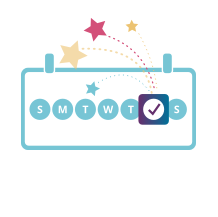
Why are families choosing the sogroya® pen?
It’s designed with your lifestyle in mind.

Portable
Stable at room temperature (up to 77 °F) for up to 3 days (72 hours).a

Ready to go
Prefilled—no cartridges and no reconstitution of the medicine is required.
Easy to use
The Sogroya® pen was rated easy or very easy to use by 99% of participants in a study.b It’s based on the FlexPro® you know with more than 15 years of patient experience.
aThe pen should be refrigerated (36 °F-46 °F). The pen can be taken in and out of a refrigerator as needed. The pen must be discarded 6 weeks after first use, or if it has been frozen, or in temperatures warmer than 86 °F. Keep Sogroya® away from direct heat and light.
bIn a randomized, crossover device preference and handling study of the Sogroya® pen in 33 adolescents aged 10-17 with growth-related disorders and 37 caregivers aged 18 and older, 99% (69) of participants found the Sogroya® pen easy or very easy to use. After training, users performed simulated injections into a pad or mannequin and then completed the Device Handling and Preference Assessment Questionnaire (DHPAQ).

The preferred device
In a device preference and handling study, the Sogroya® pen was preferred by most adolescents and caregivers of children with growth-related disorders over the Ngenla™ pen and Skytrofa® auto-injector.a
Skytrofa® auto-injector
Skytrofa® auto-injector
Ngenla™ pen
In a device handling study, patients rated the Sogroya® pen and the Skytrofa® auto-injector:

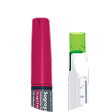
Preferred the Sogroya® pen over the Skytrofa® auto-injector
(14% preferred the Skytrofa® auto-injector over the Sogroya® pen; 7% reported no difference between the Skytrofa® auto-injector and the Sogroya® pen)
Study Design
These results are drawn from a study comparing the handling of Sogroya® pen vs Skytrofa® auto-injector in 70 participants who had never used either or similar devices: 35 adolescents with growth-related disorders aged 10 to 17 years, and 35 caregivers 18 years of age or older.
The primary objective of the study was to evaluate patient device preference as measured by a questionnaire. Another objective was to compare the ease of use. Other events or outcomes measured in the study included device training time, preparation and injection time, and overall number of complete injections. After receiving training for both devices included in the study, participants performed a simulated injection into a pad or mannequin and completed the questionnaire.
Limitations: This study utilized a US-only, small sample size participant pool of 2 distinct groups, potentially reducing statistical power (chance of bias). Adolescents were not required to be injection naïve and children under 10 years were excluded. Assessment of treatment adherence or adverse events was not done. Each study took place in a controlled setting with assessment at a single time point, not reflecting long-term use.
In the same study:
said the Sogroya® pen was easy or very easy to use
(57% considered the Skytrofa® auto-injector easy or very easy to use)
said the Sogroya® pen was faster or much faster to prepare and inject than the Skytrofa® auto-injector
(7% rated the Skytrofa® auto-injector faster or much faster to prepare and inject; 1% reported no difference between devices)
Average time to complete injection was 55 seconds for Sogroya® vs 10 minutes and 37 seconds for Skytrofa®
found the Sogroya® pen easier or much easier to bring with you when you are outside the home than the Skytrofa® auto-injector
(11% rated the Skytrofa® auto-injector easier or much easier to bring with you; 19% reported no difference between devices)
These data do not establish clinical comparability of the products for any indications and should not be seen as making any claim regarding efficacy and safety. These data make no representation or conclusion as to the factors contributing to patient preference. All percentages have been rounded to the nearest whole number.
In a device handling study, patients rated the Sogroya® and Ngenla™ pens:
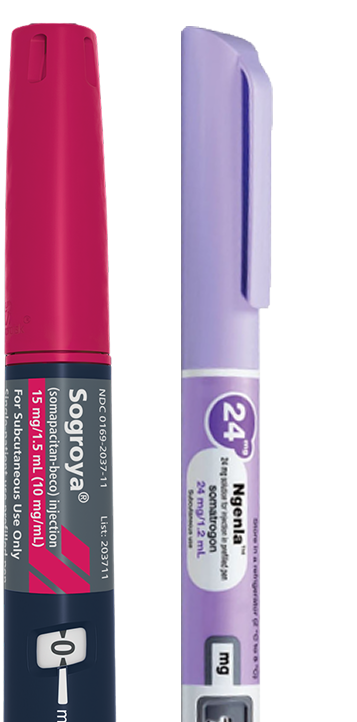
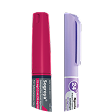
preferred the Sogroya® pen over the Ngenla™ pen
(13% preferred the Ngenla™ pen over the Sogroya® pen; 3% reported no differences between the Ngenla™ pen and the Sogroya® pen)
Study Design
These results are drawn from a study that compared the handling of Sogroya® pen vs Ngenla™ pen in 70 participants who had never used either or similar devices: 33 adolescents with growth-related disorders aged 10 to 17 years, and 37 caregivers 18 years of age or older.
The primary objective was to evaluate patient device preference as measured by a questionnaire. Another objective was to compare the ease of use. Other events or outcomes measured included device training time, preparation and injection time, and overall number of complete injections. After receiving training, participants performed a simulated injection into a pad or mannequin and completed the questionnaire.
Limitations: This study utilized a US-only, small sample size participant pool of 2 distinct groups, potentially reducing statistical power (chance of bias). Adolescents were not required to be injection naïve and children under 10 years were excluded. Assessment of treatment adherence or adverse events was not done. The study took place in a controlled setting with assessment at a single time point, not reflecting long-term use.
In the same study:
said the Sogroya® pen was easy or very easy to use
(74% considered the Ngenla™ pen easy or very easy to use)
said the Sogroya® pen was easier or much easier to use than Ngenla™ pen
(6% considered Ngenla™ pen easier to use; 16% reported no difference between devices)
These data do not establish clinical comparability of the products for any indications and should not be seen as making any claim regarding efficacy and safety. These data make no representation or conclusion as to the factors contributing to patient preference. All percentages have been rounded to the nearest whole number.
What makes the Sogroya® pen different?
Use our tool to learn about selected attributes of the Sogroya® pen injector and a range of other daily and weekly growth hormone therapy devices.
This chart is not intended to be a comparison of efficacy or safety of any of these products.
This is neither a comprehensive description of each product nor a complete list of available therapies. Only select attributes of select devices are shown.
Please refer to each product's full prescribing information including instructions for use.
Please refer to the complete Prescribing Information for Sogroya® before use.
Please refer to the complete Prescribing Information for Norditropin® before use.
Sogroya® pen dosage strengths
Patients taking Sogroya® will have the same starting dose whether they’re new to growth hormone treatment or are switching from a daily growth hormone therapy.
Sogroya® is available in three dosage strengths. Your doctor will specify the pen that is right for you or your child.



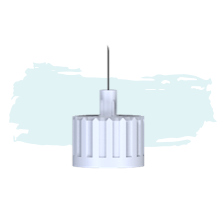
NovoFine® needles
The Sogroya® pen is compatible with NovoFine® needles—designed to minimize pain.c
cNeedles are sold separately and may require a prescription.
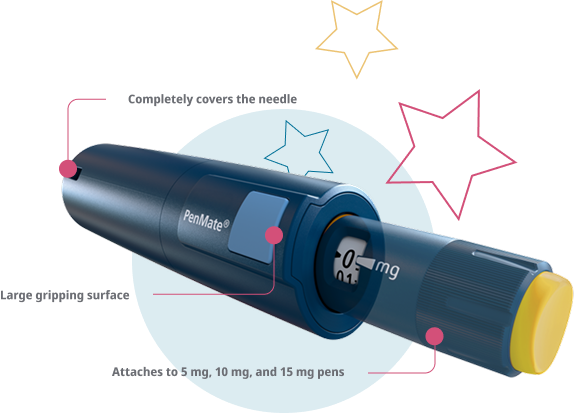
Not a fan of needles? PenMate® keeps needles out of sight
Now approved for Sogroya®, PenMate® is a reusable cover for the Sogroya® 5 mg, 10 mg, and 15 mg pens. Once attached to the end of a pen, it completely covers the needle, keeping it unseen as it enters the skin.
You can order your PenMate® by contacting your NovoCare® Case Manager or by calling 1-888-668-6444.
How to use Sogroya® for children
Our easy-to-follow guide and videos can help your child get used to the routine.
Actor portrayal
How to use Sogroya® for adults
Find out how to take Sogroya® with our helpful tools.
Actor portrayal

